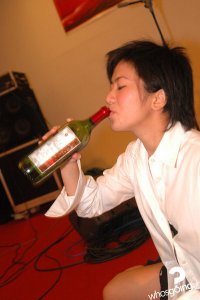Growers and producers of Iberian varieties hope to popularize their favorites
Napa, Calif. -- A group of North American grapegrowers and winemakers that quietly allied more than two years ago will meet the public for the first time in August. The Tempranillo Advocates, Producers and Amigos Society, which goes by the tasty acronym "TAPAS," will welcome the trade and the public at Napa's Copia center for wine, food and the arts, at a fiesta featuring tastings from some 40 participating wineries.
Members of the wine trade are invited to attend the opening on Friday, Aug. 8, featuring technical seminars explaining "Why Iberia and Why Now," and updates on viticultural and ecological requirements for individual varieties of Iberian grapes, plus guided tastings and a walk-around tasting of wines produced by TAPAS members. Tickets for the trade are complimentary; register at tapasociety.org.
Although the group's name highlights Tempranillo, perhaps the best- known Iberian grape, most of the 70-plus members grow or make wine from numerous varieties grown on the European peninsula. Albariño, Garnacha (Grenache), Graciano, Mourvèdre, Touriga, Verdejo, Souza and Bastardo are among the Iberian grapes now grown and vinified in North America. TAPAS' membership includes growers and wineries throughout California, Oregon, Washington, Arizona, Texas and even Ontario, Canada.
Earl Jones, proprietor of Abacela and president of TAPAS.Earl Jones, TAPAS president and proprietor of Abacela Winery in Roseburg, Ore., (abacela.com), explained that, although the Iberian grapes are most commonly considered "warm climate" varieties, "There is a key misperception that Spain is a desert. It actually has the second highest elevation in Europe (behind only Switzerland). It's a huge mesa, with elevations of 2,000 to 4,000 feet. The elevation cools it to something more moderate, the kind of place these grapes can thrive."
The top varietal among Abacela's 6,000 case per year annual production is Tempranillo. Although it's gaining popularity, "Tempranillo is hardly a household word, even in Europe," because in Spain it's bottled under the regional denomination, Rioja, Jones explained to Wines & Vines. "We have an identity problem."
Jones and fellow industry fans of the Iberian grapes first got together in late 2005, and formally started TAPAS in January 2006. Although the group has held a few tastings for professional wine organizations, most notably at the Unified Symposium in Sacramento last January, "We're trying to reach out to consumers," Jones said. He recalled that the Unified event, which drew about 300 members of the industry, was primarily an academic affair. "That didn't extend the reach to consumers," he acknowledged.
Therefore, the Copia fiesta will be open to the public on Saturday, Aug. 9, with consumer-oriented seminars and guided tastings, and a walk-around tasting where sippers can chat with TAPAS members. Tickets are available at copia.org.
St. Amant's Stuart Spencer is a TAPAS board member.TAPAS board member Stuart Spencer, program manager for the Lodi Winegrape Commission (lodiwine.com), is active in his family winery, St. Amant, which has been growing Spanish and Portuguese varieties in the Sierra Foothills since 1980, and producing varietal and port-style wines from them since 1981.
He's enthusiastic about the organization, and about its movement into the public eye. "This accomplishes several things. It lets people (consumers) know that this is being done, and lets other wineries know, too. We'd love to do this at least every year."
Spencer commented that the U.S. wine market is changing. "The younger consumers are more adventurous, more accepting. These varieties can have a place-hold in American consumers' minds."
He believes that the history of the U.S. wine market holds a key to the future of these still obscure varieties. "I have an unproven, unstudied theory," he said. "Look at the Old World wine regions that have succeeded: Bordeaux, Burgundy. The recent success of wines from Spain and Portugal here provides a platform for these (new) names," suggesting that U.S. producers of these same grapes may coattail on consumer marketing campaigns from Old World producers.
"My goal for this group is to develop, flourish and subscribe to quality," Spencer said. "Our knowledge of rootstock and clones is growing. We have experience working with these varieties in the vineyards."
He and his family have learned to work with the early-ripening Tempranillo, with its tendency to high pH, and reductive qualities in the winery. They've also come to terms with the even more temperamental Bastardo. "It's called that for a very good reason," he said. "It's thin skinned, light colored, it ripens early, has tight clusters; it rots easily and birds love it." Spencer doesn't recommend this variety for table wine, but uses it to make a nutty, aged dessert wine.
TAPAS' agenda includes both market outreach and collegial sharing of knowledge, Spencer emphasized, observing that, "In the wine industry, people like to get together and talk about what they are doing."
TAPAS, bearing in its name the implication of social conviviality and late nights in Spain, is poised to take on the French and Italian varieties that have thus-far formed the American wine vocabulary.
Jane Firstenfeld
skip to main |
skip to sidebar
Enhance the pleasure that you get from wine by sharing your experiences, knowledge, news articles and facts about the elixir of the gods and bacchanalia on earth by emailing: bacchusforyou@bellsouth.net
How Much Did The Best Bottle of Wine You Ever Drank Cost?
CONTACT INFORMATION
TO SUBMIT A POST, TO BE PUT ON THE MAILING LIST, TO HAVE QUESTIONS ANSWERED, ETC.
EMAIL:



